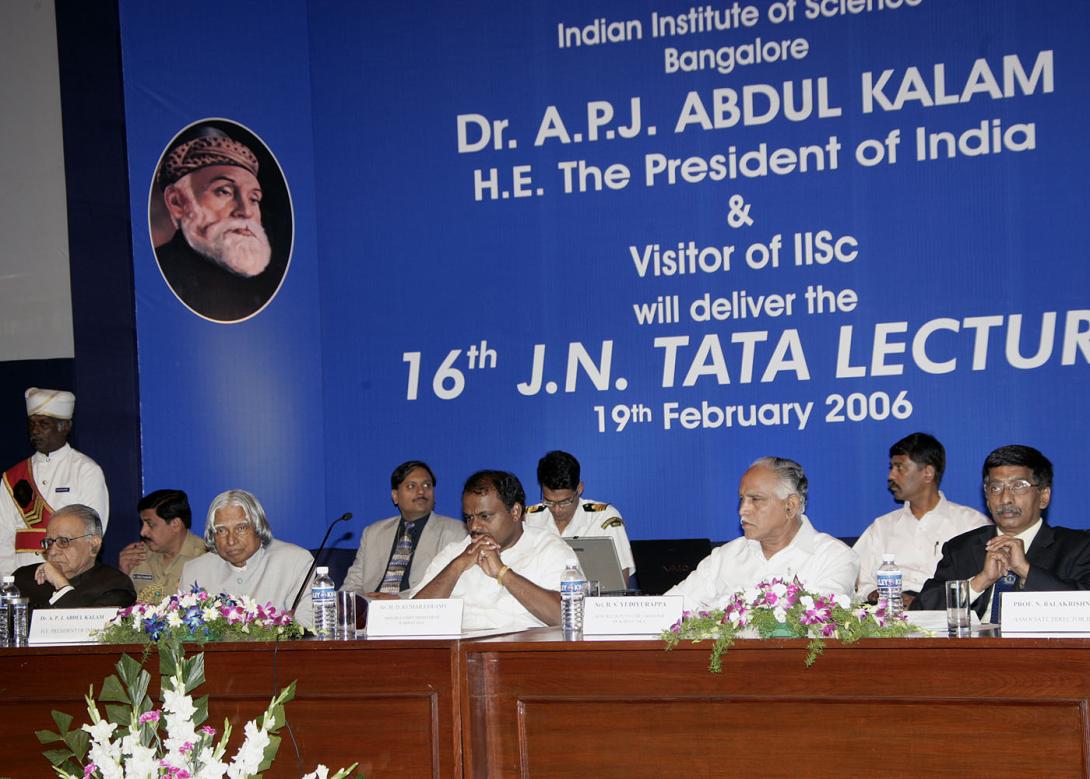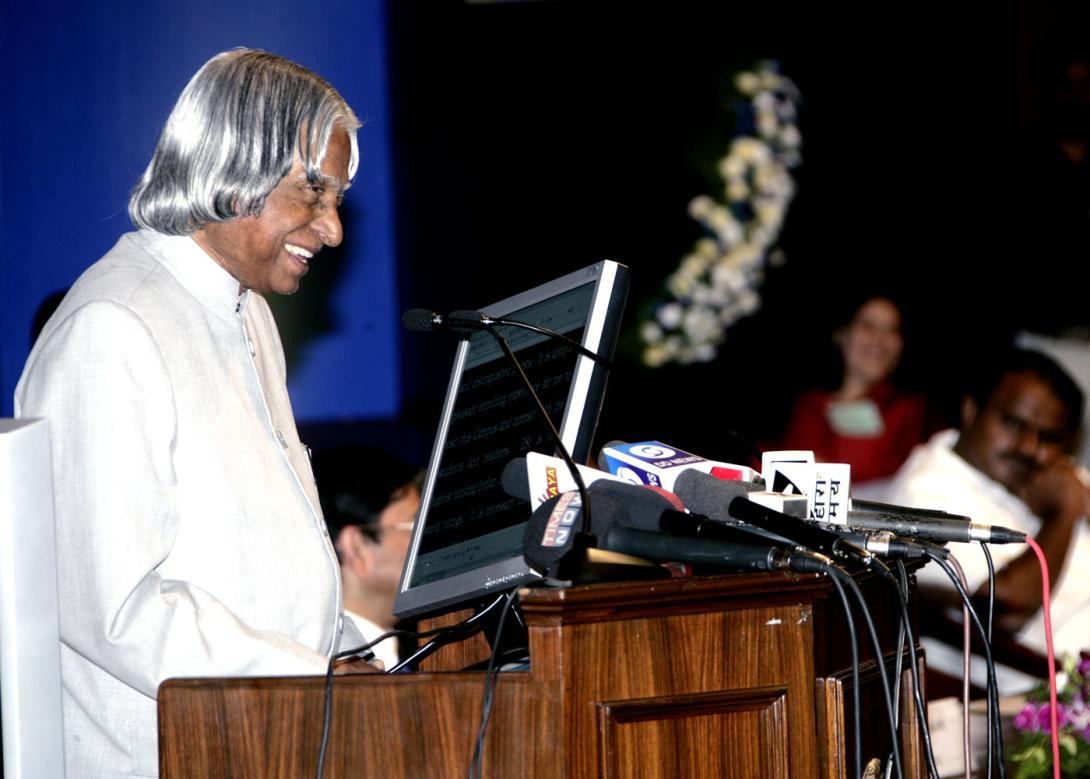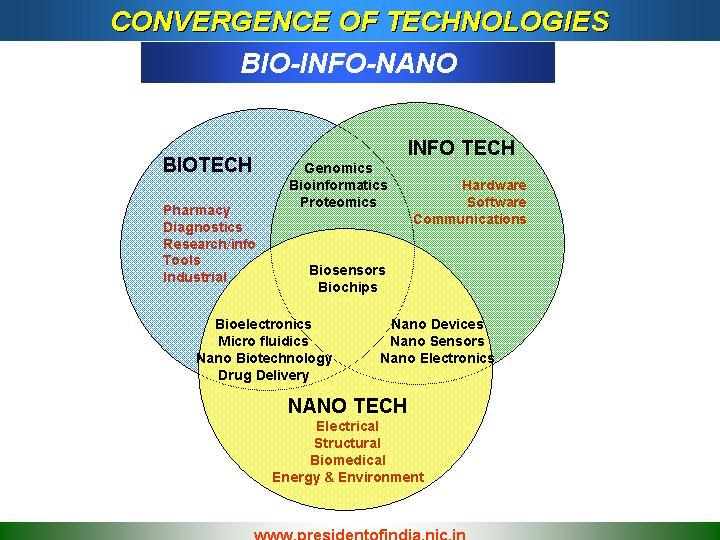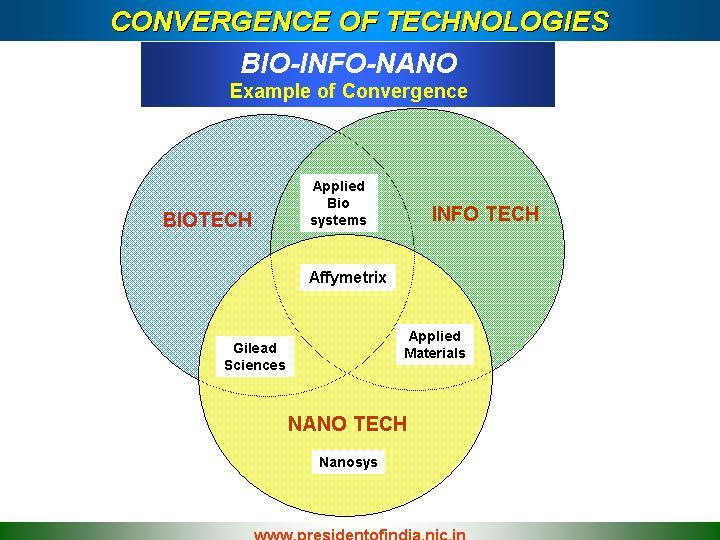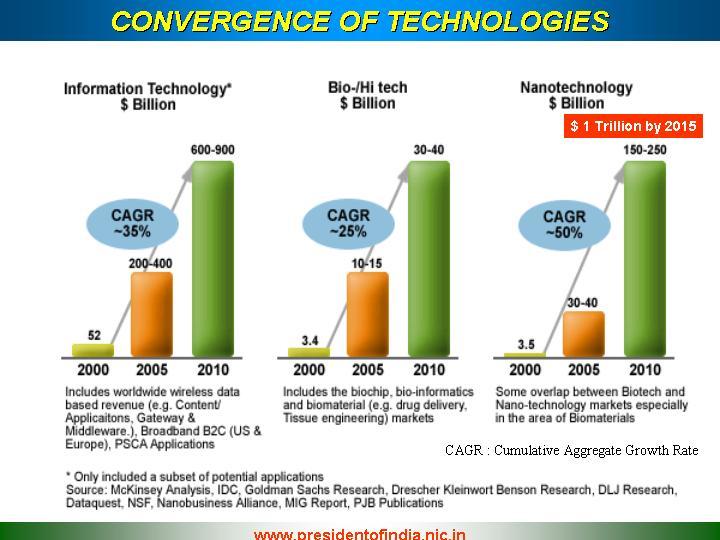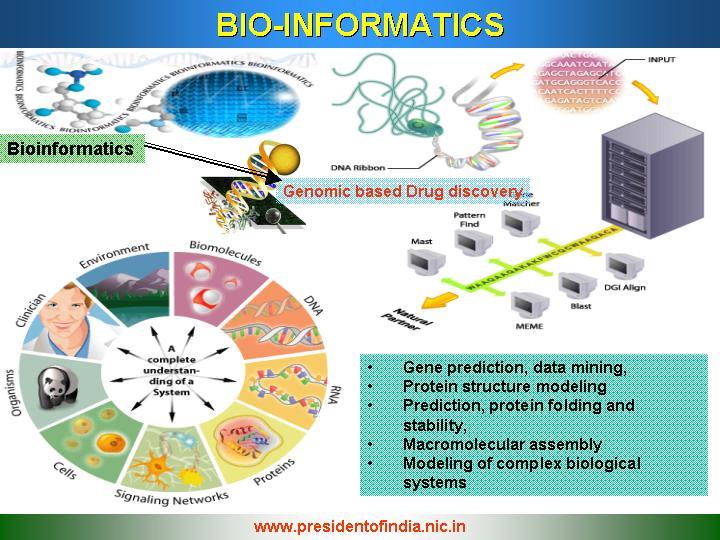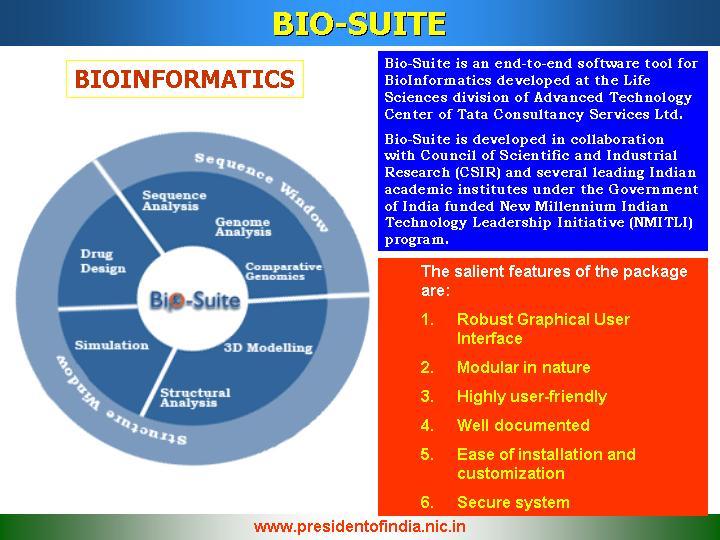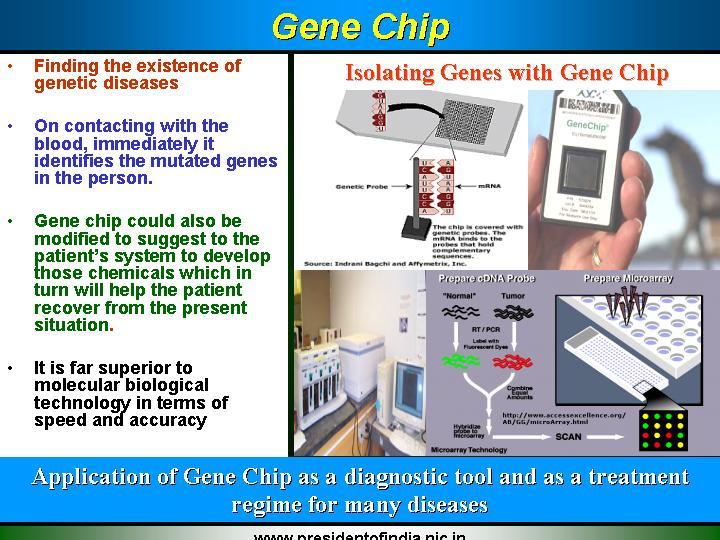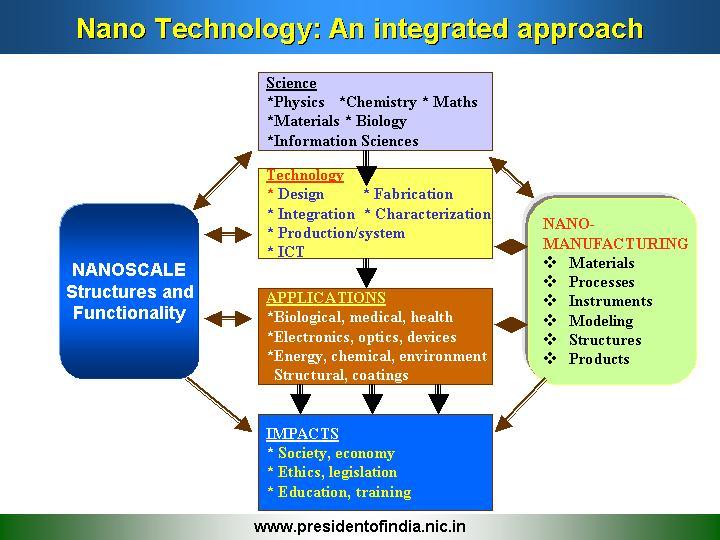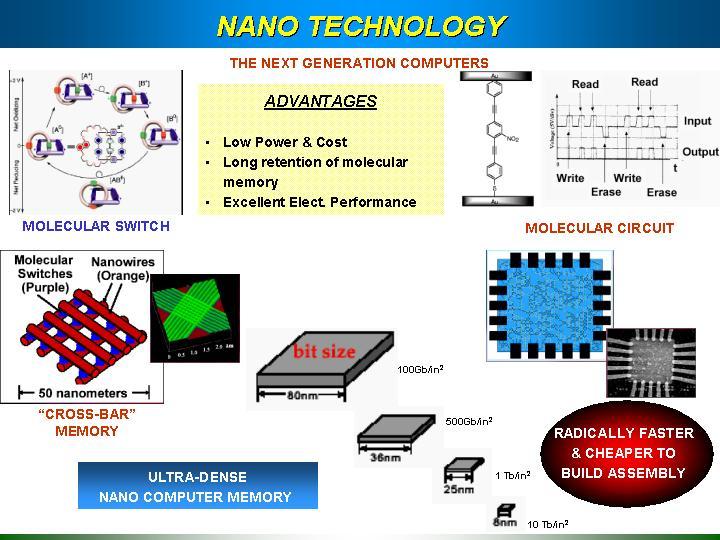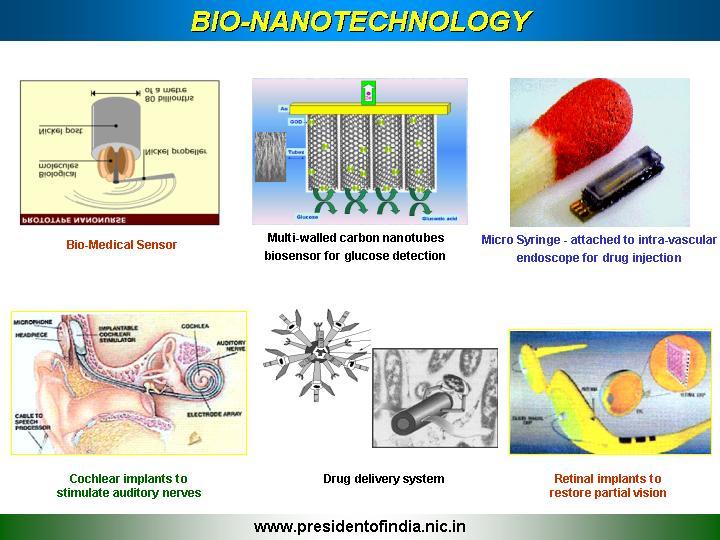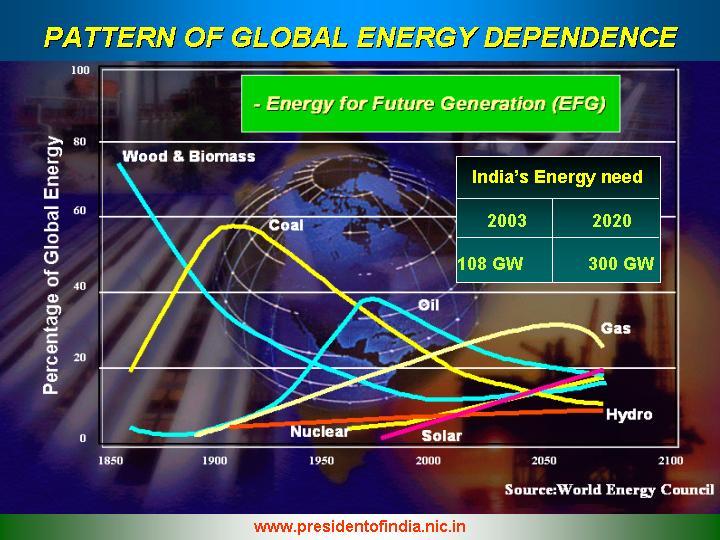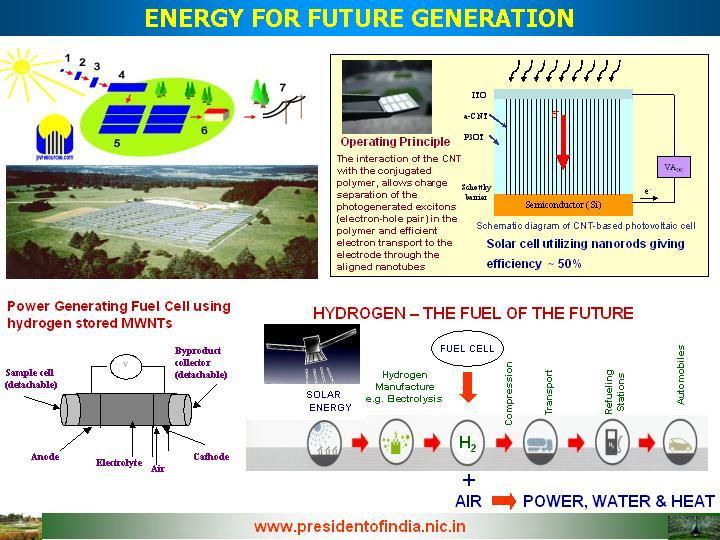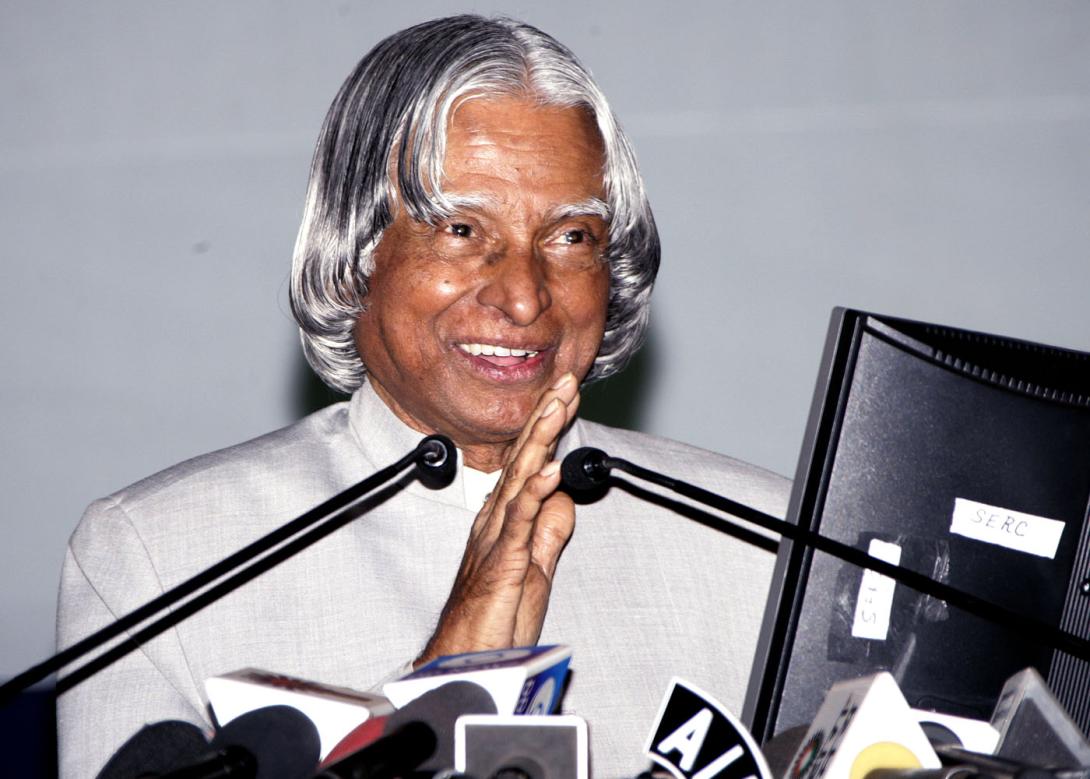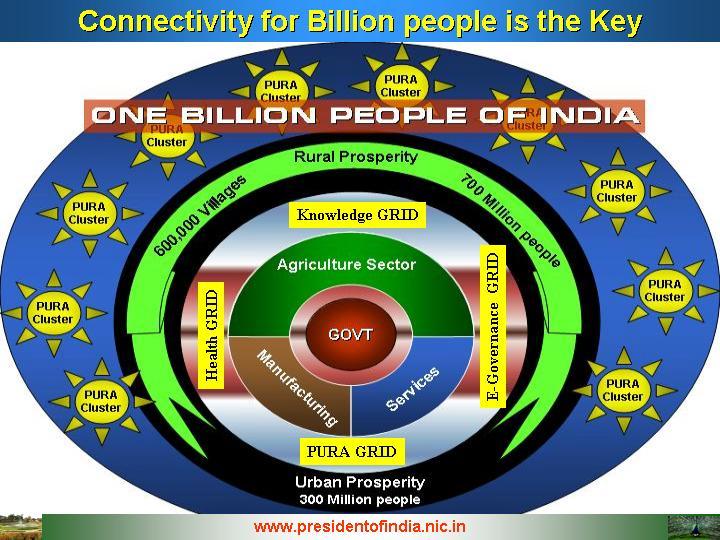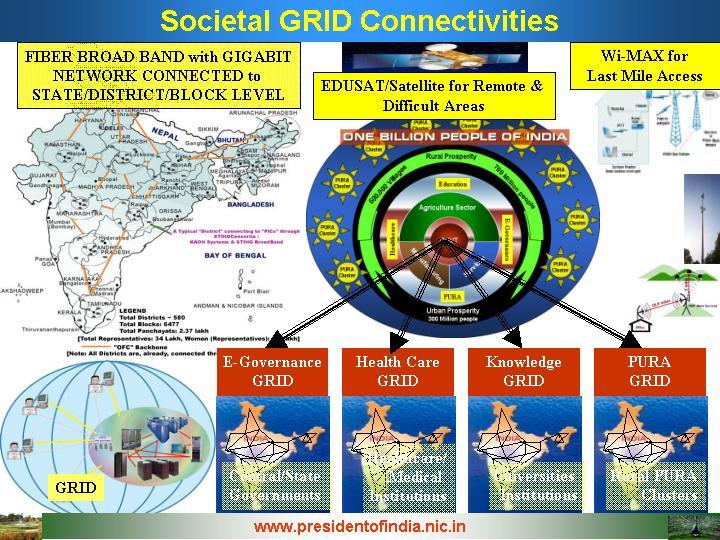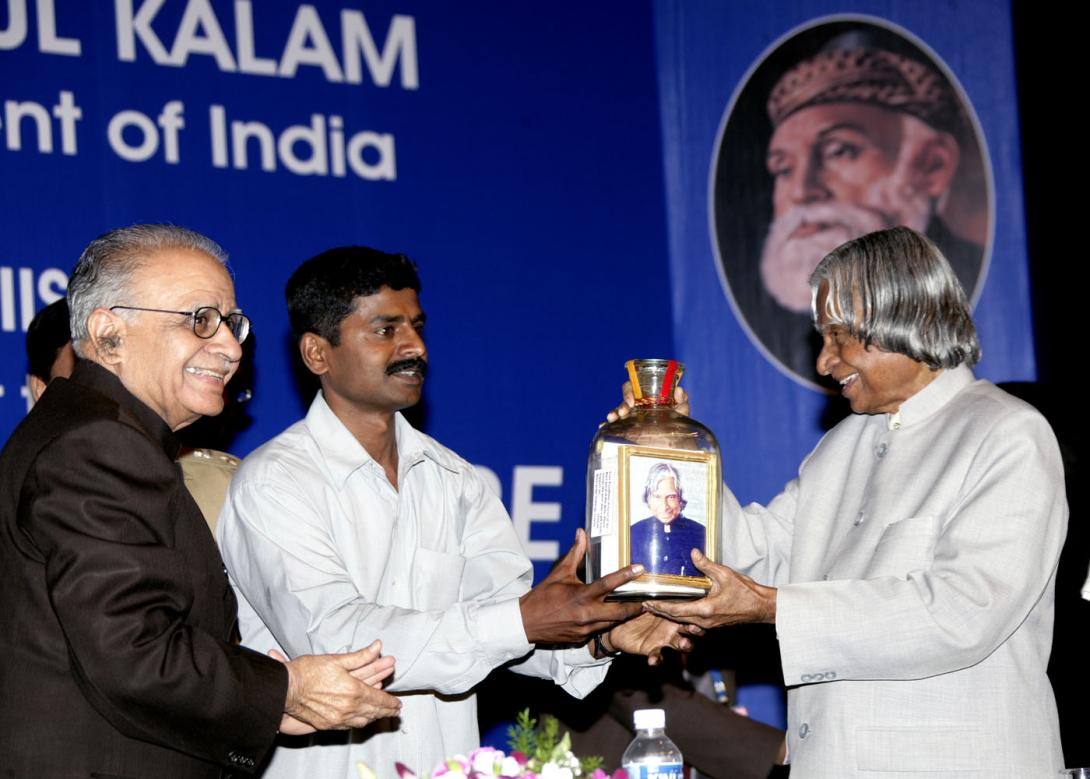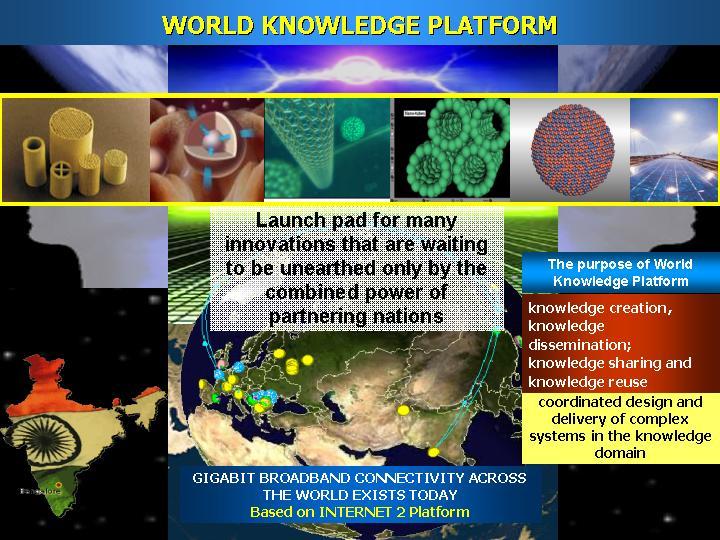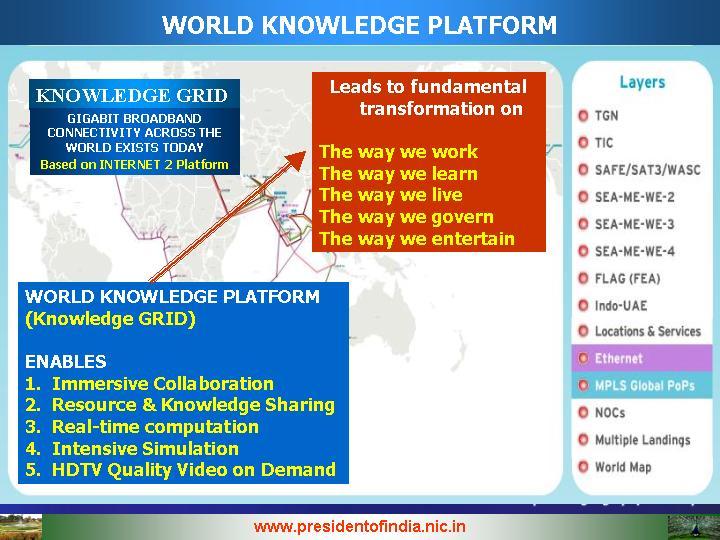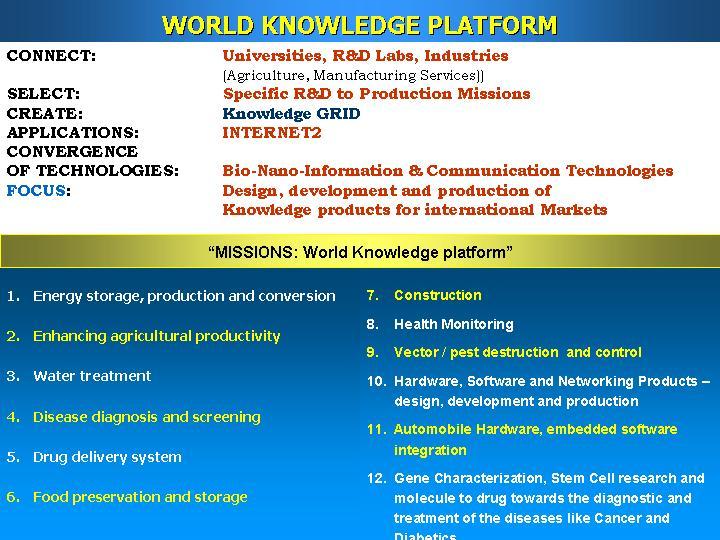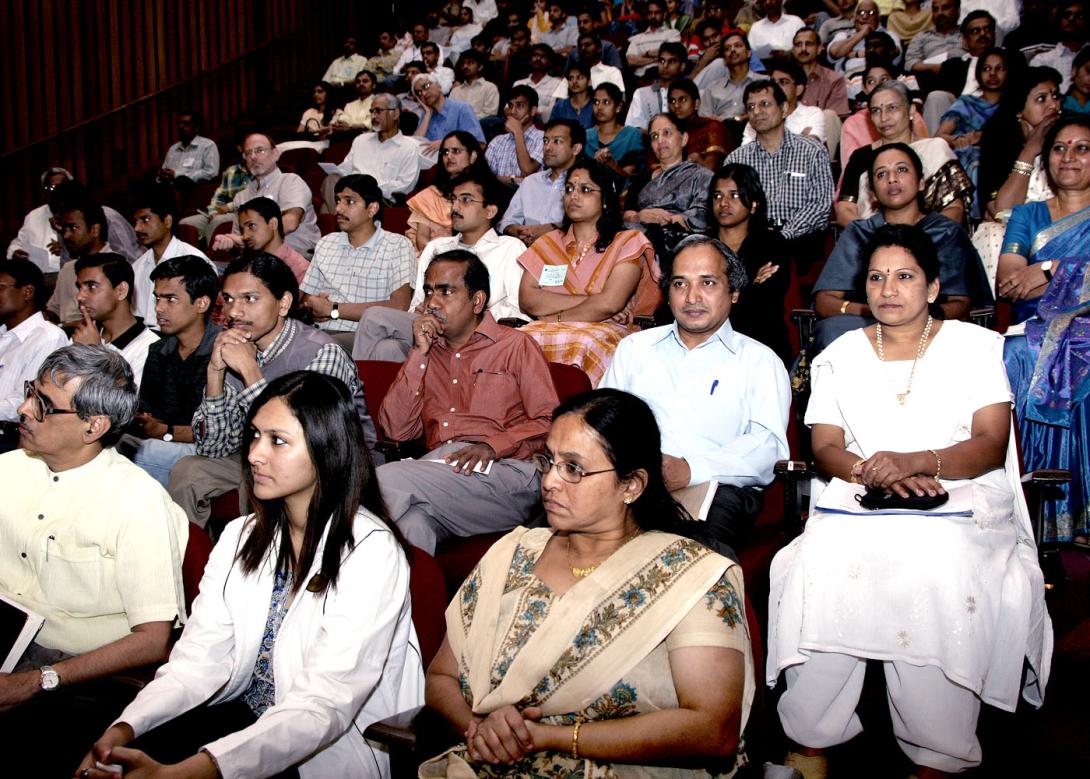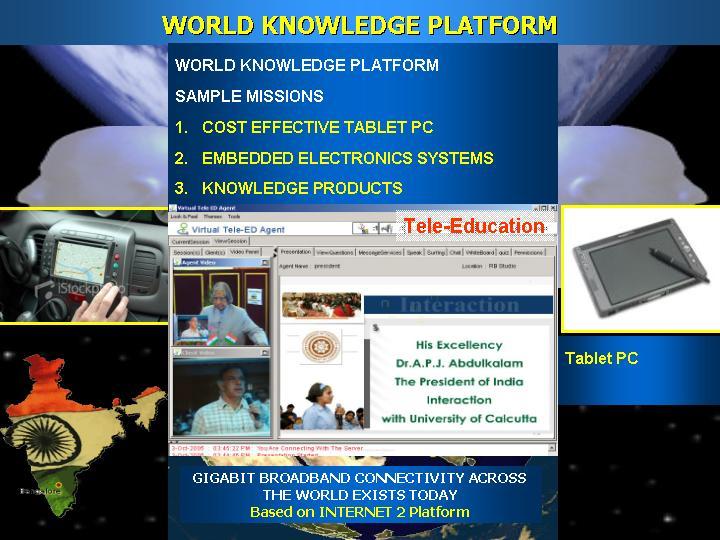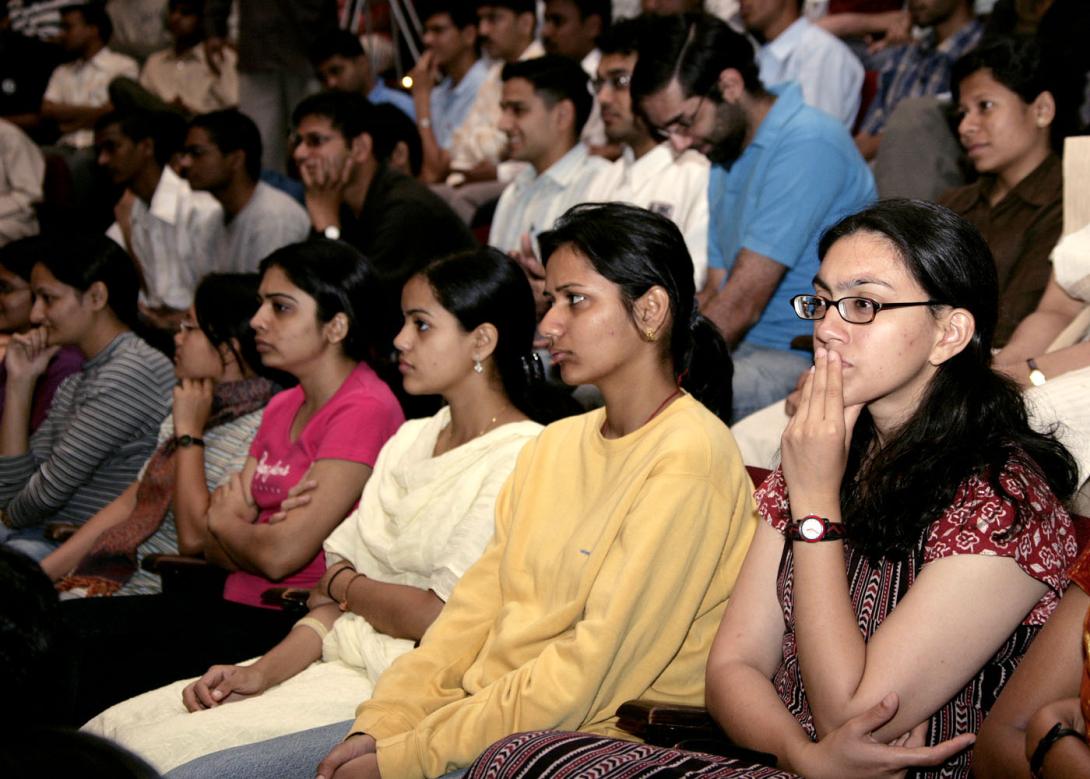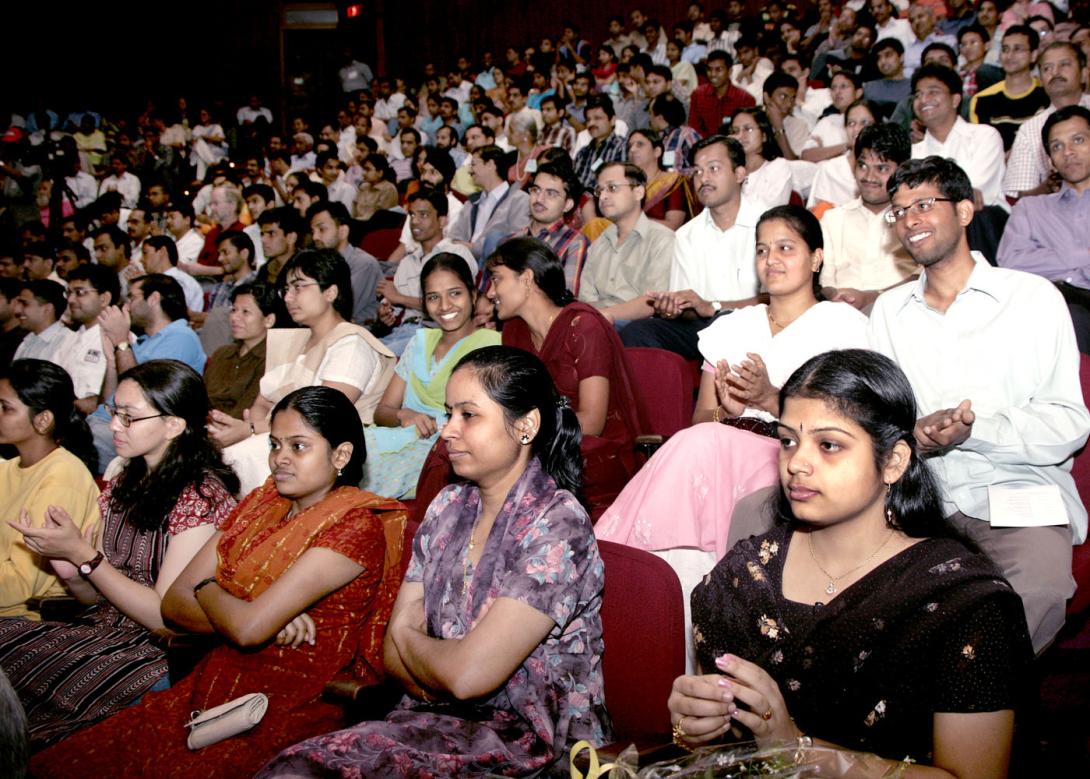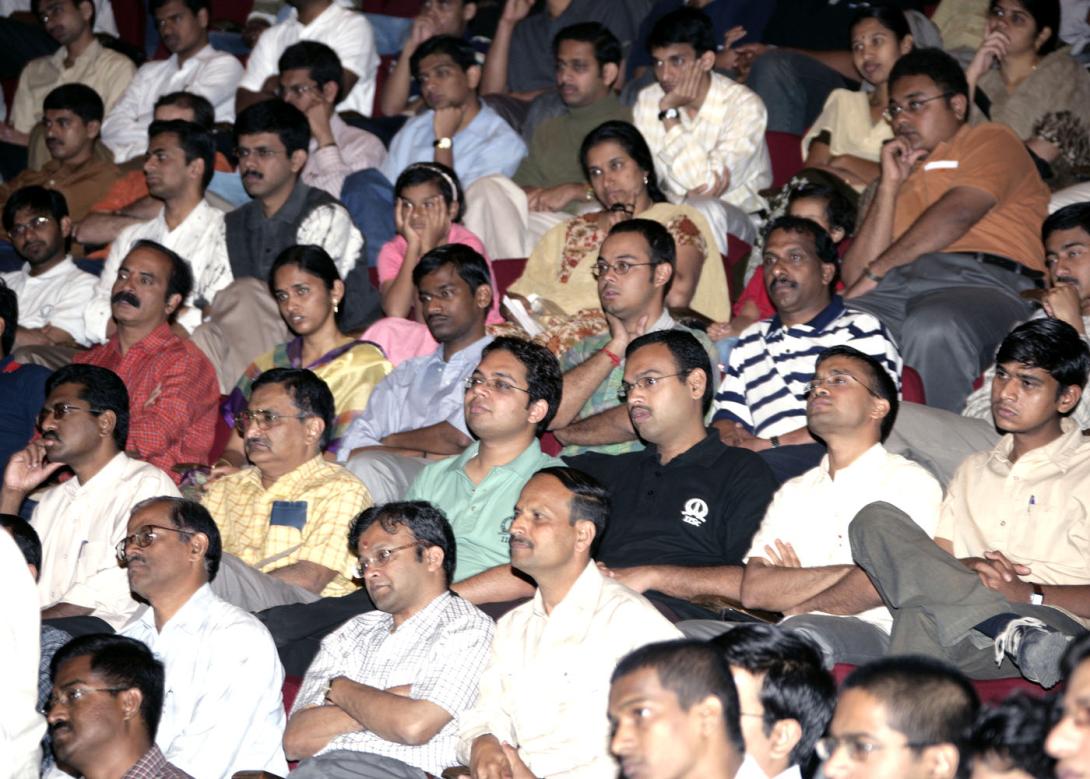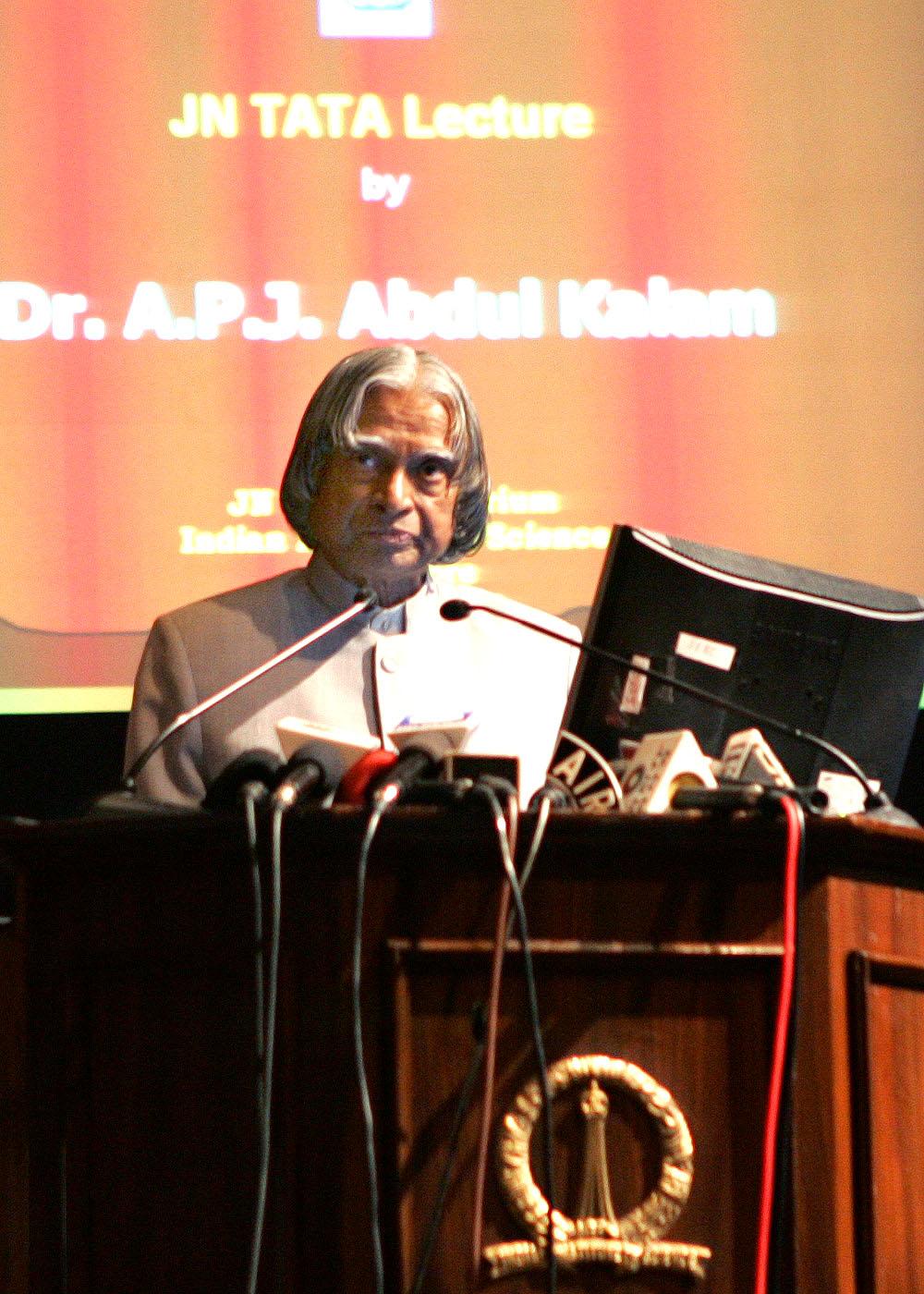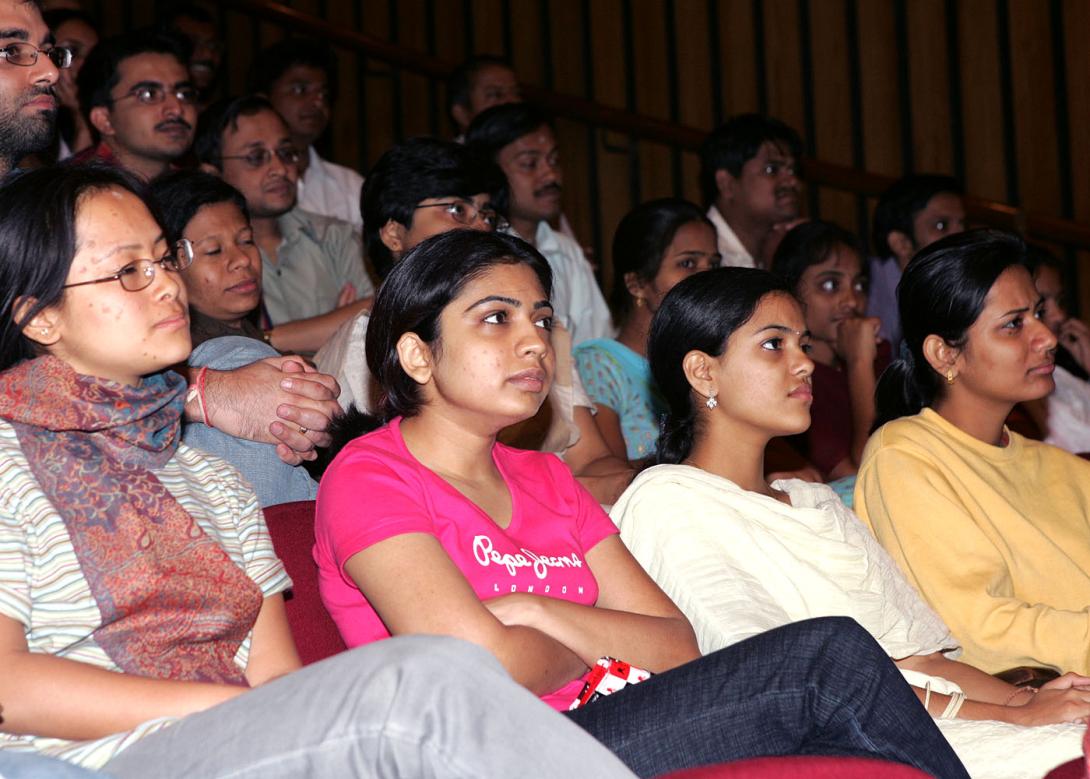16th Jn Tata Lecture, Indian Institute Of Science, Bangalore
Bangalore : 19-02-2006
Towards World Knowledge Platform
I am indeed delighted to deliver the 16th JN Tata Lecture in this beautiful campus. My greetings to His Excellency Shri TN Chaturvediji, the Governor of Karnataka, Honourable Chief Minister of Karnataka Shri HD Kumaraswamyji, Honourable Deputy Chief Minister Yedurappaji, the Prof Balaram, Prof Balakrishnan, Members of the Senate, Members of the Faculty, students, staff and distinguished guests. It is always a pleasant enriching experience for me to visit this Campus and interact with the students and teachers. IISc is the highest ranking Indian institution in the world ratings. It is necessary that the mission for IISc has to become one of the best in the world. When GSLV flies and injects the satellite in the orbit, when multiple LCA fly at supersonic speed and when AKASH engages multiple targets, I see the knowledge contribution of the intellectual community of Indian Institute of Science to the national missions. IISc has also played a major role in societal development and faculty development in the education segment of the nation. My greetings to all of you.
India in transformation
India is well on its way to become a knowledge power, there are all round growth in all sectors of the economy namely the agriculture, manufacturing and services. Today we have an opportunity to take the leadership in the knowledge revolution. Knowledge Revolution is indeed the foundation for leading India into a Developed Nation. For this, the time is ripe because of the ascending trajectory of the economy, availability of great institutions for capacity building of the human resource, abundant bio-diversity, and other natural resources and above all, our 540 million youth who are determined to make the nation prosperous, happy and a safe place to live well before 2020. With this background India must take the lead in mobilizing and integrating national and international knowledge resources. Keeping this in mind, I would like to discuss with you on Convergence of Technologies, Societal Grid leading to World Knowledge Platform and the vision for IISc. for the next century. The topic of my talk is �Towards World Knowledge Platform�.
Convergence of Technologies
The information technology and communication
technology have already converged leading to Information and Communication Technology (ICT). Information Technology combined with bio-technology has led to bio-informatics. Now, Nano-technology is knocking at our doors. It is the field of the future that will replace microelectronics and many fields with tremendous application potential in the areas of medicine, electronics and material science. When Nano technology and ICT meet, integrated silicon electronics, photonics are born and it can be said that material convergence will happen. With material convergence and biotechnology linked, a new science
called Intelligent Bioscience will be born which would lead to a disease free, happy and more intelligent human habitat with longevity and high human capabilities. Convergence of bio-nano-info technologies can lead to the development of nano robots. Nano robots when they are injected into a patient, my expert friends say, it will diagnose and deliver the treatment exclusively in the affected area and then the nano-robot gets digested as it is a DNA based product.
Convergence of ICT, aerospace and Nano technologies will emerge and revolutionize the aerospace industry. This technological convergence will enable building of cost effectiv
low weight, high payload, and highly reliable aerospace systems, which can be used for inter-planetary transportation.
Bioinformatics: The convergence of bioscience and IT into Bioinformatics has given the thrust to researchers for genomics-based drug discovery and development. Pressure is mounting over the pharmaceutical companies to reduce or at least control costs, and have a growing need for new informatics tools to help manage the influx of data from genomics, and turn that data into tomorrow's drugs.
Bioinformatics data play a vital role and emerging as a business model for the medical and pharmaceutical sector.
Key areas such as gene prediction, data mining, protein structure modeling and prediction, protein folding and stability, macromolecular assembly and modeling of complex biological systems are thriving and IT has major role to play in these areas in bringing the tools to manage the high throughput experiments and the data they generate, and sharing and integrating all the data in a meaningful way resulting into the detailed models of complex systems, particularly biological pathways.
BioSuite: I launched the Bio-Suite at Hyderabad on 14th July 2004, which is an important software package that caters to all aspects of computational biology from genomics t
structure-based drug design. It incorporates the latest publicly known algorithms, as chosen by a panel of academic partners, and has been coded entirely by the Tata Consultancy Services (TCS) team, using the software engineering practices. It can be used by academic and R&D institutions, small and medium and large biotechnology companies. This bio-suite was developed by TCS in collaboration with Council for Scientific and Industrial Research (CSIR) and academic institutions including the IISc, for cost effective drug development in India.
Gene Chip: In 2004, I visited Dr. Cherian�s Medical Centre at Chennai. It is known as, International Centre fo
Biomedical Sciences and Technology (Research & Applications). There I interacted with Dr. Emmanuel, who is working in the area of Gene Chip. They have developed a Gene Chip which can be used for finding the existence of genetic diseases including coronary artery diseases or neuro defect in the baby during a certain stage of pregnancy itself. The chip could also be modified to suggest to the patient�s system to develop those chemicals, which in turn will help the patient recover from the present situation. The specialists assembled here may like to debate whether gene chip can be used for identifying the susceptibility of the baby to the allergic diseases in the advanced stage of pregnancy. Can medical bio-informatics help in finding a treatment regime for the mother, which may give immunity to the child from the allergic disease?
It is reported that gene differences between humans and most animals are very nominal. More than 90% of our DNA is similar. This property is a boon to researchers since animal models can be subsequently used for curing human diseases based on trial data. Medical researchers are progressing further in this area for finding the application of Gene Chip as a diagnostic tool and as a treatment regime for allergic diseases and asthma.
Nano Technology: When I think of Nanoscience and
Nanotechnology, I would like to discuss about three scientists who have laid the foundation on nanoscience and nanotechnology. Mr. Richard Feynman, who described the concept of 'building machines" atom by atom in his talk at Caltech titled "There is plenty of room at the bottom". Mr. Eric Drexler, who wrote the book titled 'Nano Systems, Molecular machinery, manufacturing and computation". Prof CNR Rao, who pioneered and fostered the nanoscience research in India. Molecular nano technology has enormous potential for future aerospace systems and health areas. Research has shown that newly discovered class of molecules, leading to the development of carbon nano tubes that they have multiple
applications in the system developed in the areas of electronics particularly nano-electronics and power systems. Carbon nano tubes are normal form of carbon with remarkable electrical and mechanical properties. It is hoped that such materials could revolutionize electronic design and open the space frontier by radically lowering the cost of launch to orbit. Carbon Nano tubes reinforced with polymer matrix will result in composites which are super strong, light weight, small and intelligent structures in the field of material science. This has tremendous aerospace applications.
Molecular switches and circuits along with nano cell will pave the way for the next generation computers. Ultra dense computer memory coupled with excellent electrical performance will result in low power, low cost, nano size and yet faster assemblies.
Energy for future generations: The era of wood and bio-mass is almost nearing its end. The age of oil and natural gas would soon be over even within the next few decades. The world energy forum has predicted that fossil based oil, coal and gas reserves will last for another 5 - 10 decades only.
Hydrogen fuel and solar rays are the two modes to get clean power. The solar rays, when passed though presently available solar photovoltaic cells have an efficiency of less than 20%. I would like to discuss the latest research in the area of photo-voltaic cells using Carbon nano tubes which can give an efficiency of over 45%, nearly three times the efficiency which the present technology can offer.
CNT based solar cells for higher efficiency
The low efficiency of conventional photo voltaic cells has restricted the use of solar cells for large application for power
generation. Research has shown that the Gallium Arsenide (GaAs) based PV cell with multi junction device could give maximum efficiency of 30%. Therefore, the present research trend is on the use of Carbon Nano Tube (CNT) based PV cell. Both single wall CNTs and multi wall CNTs have been used as electrodes, as electron acceptor, which can split exciton into electrons and holes to produce electricity.
The CNTs provide better electron ballistic transport property along its axis with high current density capacity on the surface of the solar cell without much loss. Higher electrical conductivity and mechanical strength of CNT could improve the quantum efficiency to the order of 35%. But, this is not sufficient. Recent research abroad has shown that the alignment of the CNT with the polymer composites substrate is the key issue and this aligned CNT based PV cells would give very high efficiency in photovoltaic conversion. The polymer composites increase contact area for better charge transfer and energy conversion. In this process, the researchers could achieve the efficiency of about 50% at the laboratory scale. The optimum efficiency was achieved with the aligned CNTs with poly 3 � octyl thiophene (P3OT) based PV cell. I am sure, scientific researchers in Indian Institute of Science will be excited to work in this area of research in partnership with industries so that we can get large scale production of aligned CNTs with P3OT based high energy solar cells. Now I would like to describe the societal grid, which is essential for bringing the connectivity for the billion people towards building the knowledge society.
Technology to Society � Societal Grid
Development of technologies and their convergence have significant influence on the society in terms of knowledge,
health care, governance and economic development. To maximize the synergy between the various components of education, healthcare, e-governance, rural development we need to establish connectivities among them. These connectivities will certainly bring seamless access and information flow among the various domains leading to maximization of GDP and productivity; hence, there is need for establishing the GRIDs namely Knowledge grid, healthcare grid, e-governance grid and the PURA (Providing Urban Amenities in Rural Areas) grid. This interconnecting grid will be known as societal grid. Knowledge sharing, knowledge utilization and knowledge re-use is very vital by all constituents of the society for promoting non-linear growth. Details of Societal Grid are:
1. Knowledge GRID - Inter connecting universities with socio-economic institutions, industries and R&D organizations.
2. Health Care GRID - Inter-connecting the Health Care institutions of Government, Corporate and Super specialty hospitals, research institutions, educational institutions and ultimately, Pharma R & D institutions.
3. e-Governance GRID - Inter-connecting the Central Government and State Governments and District and Block level offices for G2G (Government to Government) and G2C (Government to Citizen) connectivity.
4. PURA GRID - Connecting the PURA Nodal centers with the Village knowledge centres and Domain service providers.
We have, so far discussed all the four connectivities required for the societal transformation. With this transformation, India is poised for creating the World Knowledge Platform for promoting synergy amongst partner nations. This will blossom with the enabling environment of trust and confidence between all partners.
World Knowledge Platform
During my recent visit to Singapore, Philippines and Republic of Korea early this month, I have put forward the
concept of �World Knowledge Platform�, which will integrate the core competencies of the partner countries to develop knowledge products. This platform will enable joint design, development, cost effective production and marketing of the knowledge products in various domains based on the core competence of partner nations to international market.
Knowledge GRID: Initially, the mission of World Knowledge Platform is to connect and network the R&D
Institutions, Universities and Industries using fiber broadband from the partner nations on selected R&D Missions. The underground fiber cable infrastructure already exists between the many partners. It is only waiting to be lighted up with state-of-the-art optical networks and to ignite the minds of the knowledge workers. This knowledge GRID will support multitude of seamless connections supporting both synchronous and asynchronous communication, carrying either text or audio or video. We can then use this network in the academic environments to teach courses online and share expensive equipments remotely. In the Industrial environment, it can be used to design complex systems � even ones that are as complex as an aircraft in a collaborative way using virtual prototyping concepts in the cyber space.
In India, we have today an example of a successful joint venture which harnessed the core competencies of two nation India and Russia, who have different cultures, languages and design standards. The product which has come out is of world class, much ahead of other countries due to the joint working of best of minds from both countries. This proves that if the core competencies of nations are combined, best of knowledge products can emanate well ahead of time.
Missions of World Knowledge Platform: The convergence of Bio, Nano and ICT is expected to touch every area of concern to the humanity. The �World Knowledge platform� will take up the missions, in some of the areas given below, which are of utmost urgency to all of us to make our world a safe, sustainable and peaceful and prosperous place to live:
1. Energy: exploration, storage, production and conversion
2. Water: treatment and desalination
3. Healthcare: Diagnosis, drug delivery system
4. Food: preservation, storage and distribution
5. Knowledge products :Hardware, Software and Networking Products
6. Automobile: Hardware and embedded software integration
7. Gene Characterization, Stem Cell research and molecule to drug towards the diagnostic and treatment of the diseases like Cancer and Diabetics.
8. Herbal and natural products, sharing experiences with modern bio products.
9. Tourism and related services
In addition to the areas mentioned above, areas such as electronics, ICT and Automobile Sector may also be focused especially in the areas of design, development leading to productionization for meeting the market demands of the respective countries and also for world market. The core competence of India is software and the core competencies of the other partner nations are hardware and software, it can lead to design, development and marketing of world class systems that is equally dominated by the software intelligence and hardware innovation. The world knowledge platform will also evolve a virtual design centre with the participation of collaborating countries.
For example, initially the following specific missions can be undertaken:
(a) Tablet PC
Joint design, development and manufacture of a handheld tablet PC with multilingual capability in a cost effective manner with open source operating system and software configured for the school students and the common citizen who wishes to benefit from our e-Governance initiatives to meet the requirements of Asia pacific and African countries. This PC will have the wireless connectivity so that it can take care of the communication needs and possibly even the Telephone and will have sufficient video capability to act as an
entertainment platform and for tele-education and telemedicine and even a hand writing recognizer that will also permit authentication for secure e-business transactions. The challenging task will be to configure, develop and produce and market the tablet PC at a cost of $100 to $150, so that student, teacher to researchers will be in a position to utilize it. For the young children, it will result in substantial reduction in carrying heavy books and note books and make going to the school a pleasure and learning enjoyable.
(b) Embedded electronic Systems
Design and development of embedded systems integrated with hardware will have tremendous application in automobile sector, railways, consumer electronics, aerospace systems, defence systems and precision manufacturing. For example, automation of railway signaling system with wireless relays which will ensure fool-proof signaling and prevent accidents. Design and development of Wi-Max standard switches, routers and access points which has a big market in India for connecting 600,000 villages for 7000 PURA clusters.
(c) Knowledge products for Societal Transformation
Design, development and customization of knowledge products in the field of tele-education, tele-medicine and e-Governance will provide global business opportunities. India and partner countries can form a consortium for the vertical missions of the World Knowledge Platform in the above-mentioned areas with the public, private partnership. In short, the Knowledge Platform would be launch pad for many innovations that are waiting to be unearthed only by the combined power of multiple nations.
E-Business Network: This framework would bring robust economy in a faster scale, business transaction, knowledge exchange, joint business operations, quick exchange of information and round the clock business with lesser legal constraints. Initially, the proposed e-business network between India and partner country, would cater to two major segments namely B2B (Business to Business) and B2C (Business to Consumer). I hope our IT and BT industries in partnership with institutions like IISc and R&D laboratories should be ready to take the leadership to this mission with a specific focus resulting knowledge products to bring economic prosperity to India and partnering nations.
Conclusion
Friends, when I am with you in the beautiful Auditorium named after a visionary JN Tata who visualized the need for a great research institution hundred years before, I am visualizing important milestones of IISc completing 100 years of purposeful contribution to Indian science and education in the year 2009.
IISc has been a premier education and research institution in the country for science and technology aiming to be one of the leading institutions in the world. How will this institute meet this challenge in the coming century? Based on my visits to all the States and Union Territories in the country and 12 countries in Asia, Europe and Africa as the President and meeting over one million youth, I realize that all the youth irrespective of which country they belong to, aspire to live in a peaceful, happy, prosperous and safe nation. What does it mean? It means that economic prosperity alone is not sufficient. It has to be complimented with the value systems and our five thousand years old Civilizational heritage which has genetically shaped the Indian people. I personally believe, when the nation is progressing towards economic development, it is also essential to build education with value system drawn from our Civilizational heritage. The good human life comes out of the way we live; we may have series of problems. But the billion people have the connectivity which gives us the united strength. To meet the challenges of such a missions for the nation, I visualize the Indian Institute of Science have to have the vision for the next few decades. The components of the vision are:
(a) Creating undergraduate education as part of the IISc programmes which will enrich the teaching and research.
(b) IISc has to be known for its pioneering research at least in five areas of science and technology.
(c) Making the studies in humanities compulsory for all students at graduate, post-graduate and Ph.D. level.
(d) Conceiving and conducting a special programme on convergence of technology at the graduate, post-graduate and Ph.D level with continuous update.
(e) Creating Centres of Excellence in multiple locations in the country and abroad for spreading IISc brand.
(f) Be a partner in the World Knowledge Platform to promote world class knowledge creation, knowledge dissemination and knowledge sharing among all partner countries.
(g) Prepare the research road map for the nation for the next three decades in macro terms also prepare a micro roadmap for the next decade.
(h) Carry out study projects for inter-planetary missions and mining in planets to augment the material, water and energy resources for the nation.
(i) Create an IISc-Virtual Education Hub � so that the quality education from IISc can reach out to the entire nation. It should also act as a Virtual Collaborative Hub, which will become the platform for the scientists, researchers from IISc, world wide scientists and Nobel laureates to share their knowledge among the students and faculty across India.
(j) Generate next generation leaders and faculty for the multitude of colleges and Universities in India so that you can create �burning candles that can light other candles� that reflect the ethos and research culture of IISc every where in India
My best wishes to the members of Indian Institute of Science in their mission of promoting excellence in scientific research and education for leading India to become a knowledge power.
May God bless you.

